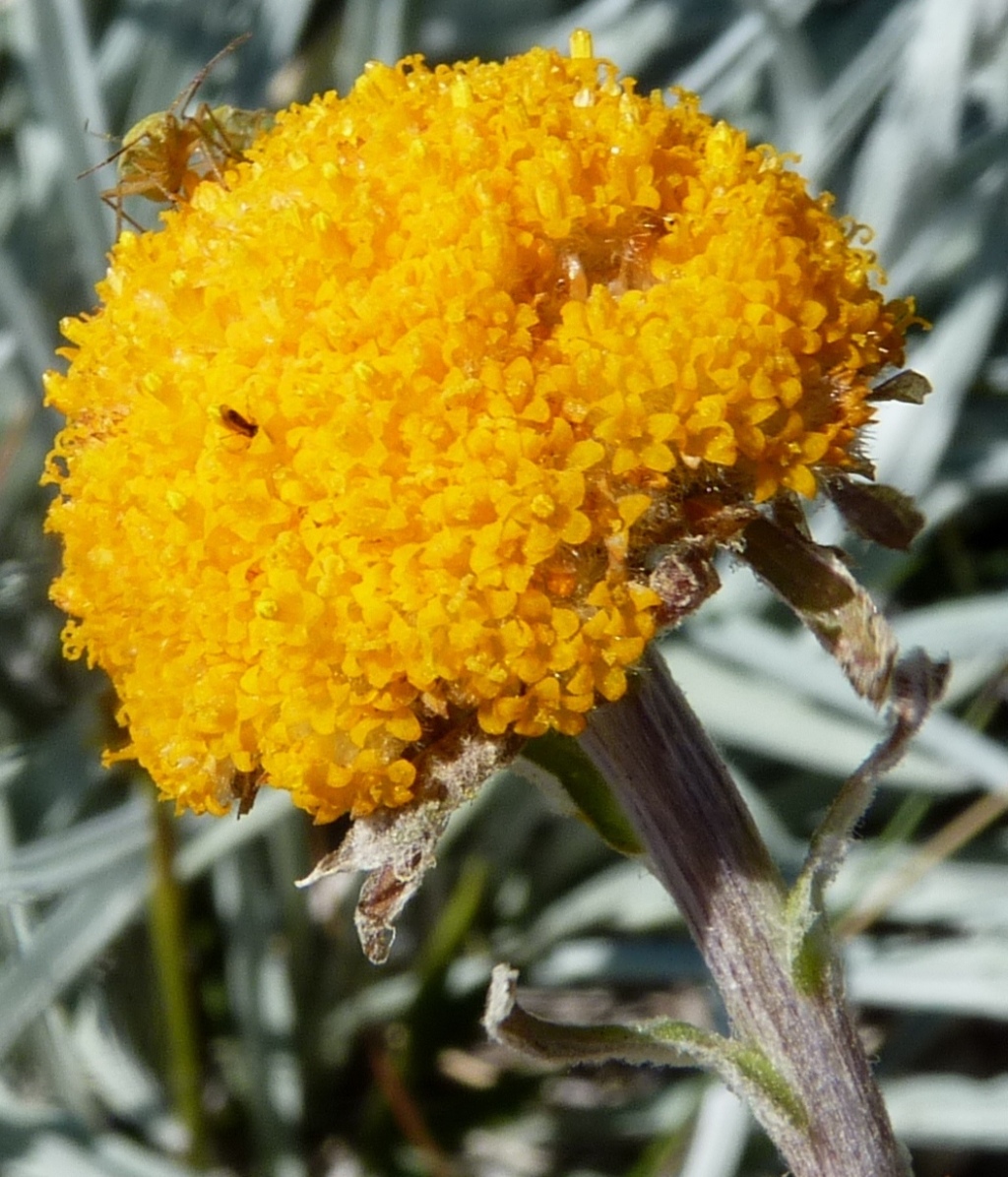Craspedia
Annual or perennial herbs; roots thick and tomentose or with a taproot. Leaves alternate, entire, mostly stem-clasping, often rosetted at base; vegetative parts with glandular and/or multiseptate hairs, the latter sometimes with a long, fine simple tip. Inflorescence a spherical or hemispherical compound head of pedunculate capitula on a general receptacle; common involucre of mainly herbaceous bracts usually similar to uppermost leaves. Capitula homogamous, discoid, up to 120 per head, each subtended by a scarious or partly herbaceous bract; capitular bracts c. 5–10, oblanceolate, scarious; receptacle with c. 5–10 scales similar to the capitular bracts; florets 3–12 per capitulum, tubular, bisexual, 5-merous, corolla distally campanulate or cup-shaped, with broad-acute, papillate lobes; anthers tailed, with triangular apical appendages; style-branches flattened, linear-oblong, truncate, glabrous. Cypselas obovoid, sericeous with bifid hairs; pappus a single ring of colourless plumose bristles, usually fused for varying lengths.
About 35 species, confined to Australia and New Zealand; c. 20–25 species in Australia.
Everett, J. (1999). Craspedia. In: Walsh, N.G.; Entwisle, T.J., Flora of Victoria Vol. 4, Cornaceae to Asteraceae, pp. 758–764. Inkata Press, Melbourne.
 Spinning
Spinning



